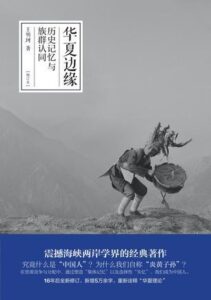
Wang Mingke 王明珂
Beijing: China Social Sciences Press, 2006
Reviewed by YANG Qian (PhD student, Shandong University; HYI Visiting Fellow)
Previous anthropologists usually treated language, phenotypic traits, and cultural customs as evidence in the differentiation of ethnic groups. Now, however, more and more scholars tend to consider identity as the essential difference among ethnical groups. Influenced strongly by instrumentalists, Wang Mingke concentrates on primordial attachments within ethnic groups. Based on a large number of historical, archaeological, and anthropological materials, he discusses the formation and change of “Huaxia” (华夏) (or Chinese) identity in the perspective of ethnic boundaries.
This book consists of four chapters. To begin with, the author introduces the theories of contemporary ethnic studies, pointing out some fatal problems. For instance, cultural traits are not corresponded to ethnic groups. Having the same ethnic self-awareness and the sense of others, the ethnic group is formed and sustained by subjective boundaries that are based on collective memory and structural amnesia. Then, the second chapter investigates the formation of ecological boundaries in China. The archaeological remains in Hehuang (河湟) region of Qinghai Province, Ordos (鄂尔多斯), Western Liao River (西辽河) area, reflect that there was a climate change in the late Neolithic period. In order to adapt to the increasing drought, indigenous people in above areas chose to adopt herding instead of agriculture, which led to their unique subsistence system, social organization, and religion. The third chapter explores how the ecological boundaries result in ethnic boundaries. During Shang and Western Zhou dynasties, the boundaries were still ambiguous and variable. In the Eastern Zhou, however, vassal states, faced with the invasion of the Rongdi (戎狄), had to protect their territories together. To reinforce their coming together, they proposed the same Huaxia identity. After that, those states located in the periphery, such as the Wu (吴) state, tried to use the common belief of origin with Huaxia to claim Wu state was also a member of this Huaxia ethnic group. The ethnic conception of Huaxia was formed and expanded finally. The fourth chapter continues to talk about how Huaxia people used historical documents to maintain these ethnic boundaries. The author uses the case study of modern Qiang (羌) ethnic group to explain that Huaxia people took different attitudes toward other ethnic groups. To strengthen the domination, Huaxia people modified the collective memory to create harmonious relationships with friendly ethnic groups, but, at the same time, also drew clear boundaries in relation to aggressive ones.
Through this whole book, the author holds an opinion that it is the conflict and redistribution of materials that contributes to the formation and change of ethnic boundaries. As with many other cultural evolutionists, the author does not get away from the environmental determinism. As parts of collective memory, archaeological artifacts and historical documents were selected intentionally. From this point, we could see the hidden danger in the interpretation of these materials.
